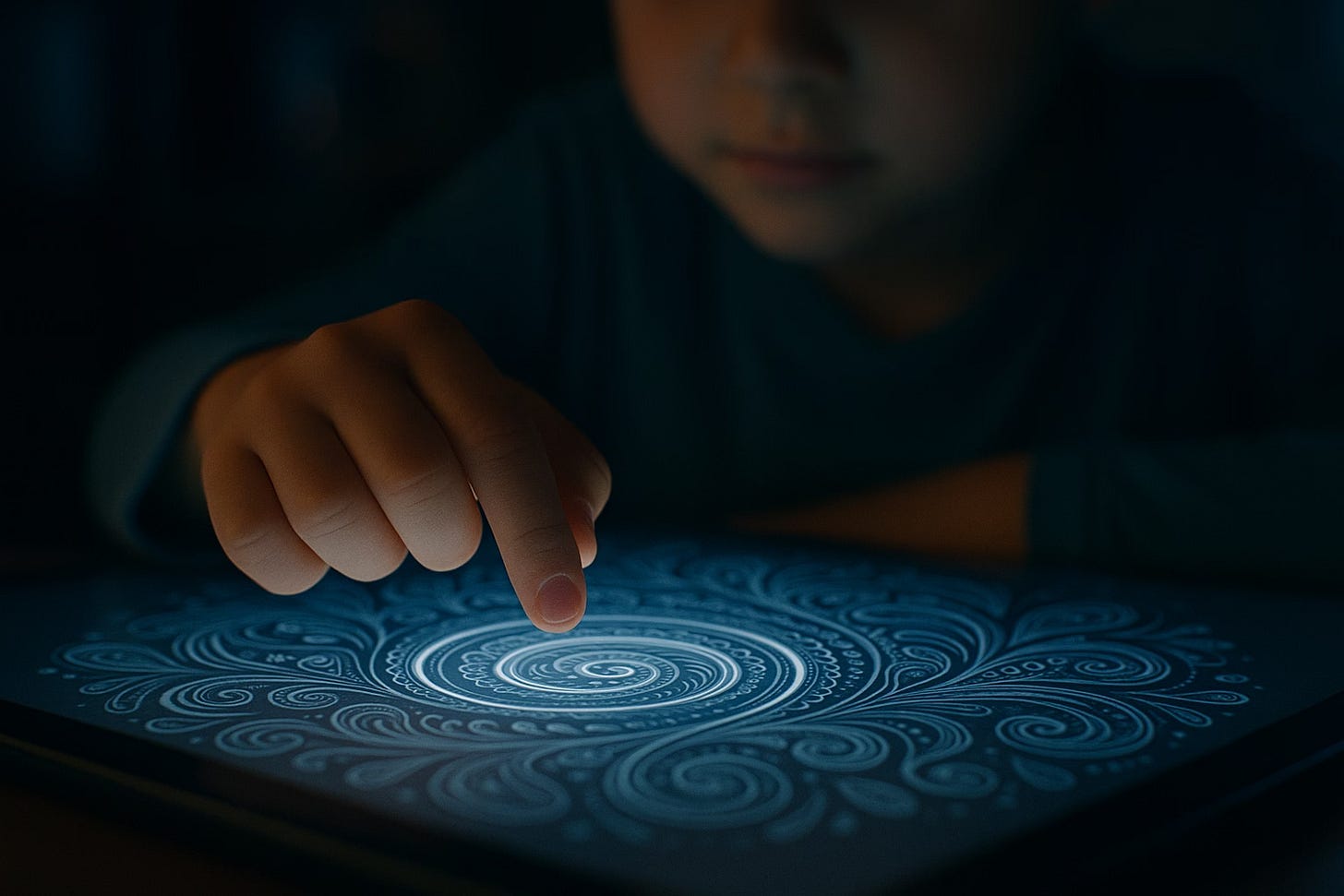The First Humane Devices
Technology for kids should support growth, not hijack attention. When product design aligns with developmental integrity, it amplifies identity rather than undermining it.
OpenAI and Jony Ive are designing a new kind of device.
No product showcase. No big reveal. Just a quiet signal: two of the most influential minds in design and AI are collaborating on something that might finally respect the user’s rhythm.
And in 2025, that stands out.
Because if you’ve been raising or teaching kids in recent years, you’ve seen the shift.
The faster the tech, the harder it is for a child to hold a moment still.
We didn’t mean to build childhood out of scrolls and alerts. But we did.
And now, systems train kids to move through experiences without naming them.
If these devices are built to resist that drift, they aren’t just innovative.
They’re essential.
What Today’s Devices Are Really Teaching
Most systems kids use run on preemptive logic.
Content appears before curiosity. Suggestions interrupt before the question form. Prompts collapse the space between thought and response.
It’s called personalization. But it often flattens experience into prediction.
And when everything responds before a child asks, they start to forget they were supposed to wonder first.
This isn’t about distraction. It’s about displacing the internal voice that makes meaning.
By contrast, OpenAI’s ChatGPT doesn’t interrupt. It doesn’t assume. It waits.
That wait is the difference. It gives children back the arc of authorship.
And when pacing is restored, reflection becomes possible—not as a luxury, but as a structure.
Children raised without space for reflection become fluent in reaction—but uncertain in memory.
Design That Respects the User
Jony Ive’s work didn’t just look good—it respected attention.
The iPod made choices feel deliberate. Early Macs offered room to think. Even iOS, in its early form, let the user lead.
His design wasn’t about silence. It was about restraint.
Now imagine a device shaped by that same posture—a tool that doesn’t rush to be useful, but waits to be invited.
A child finishes the day. Instead of feeding the next input, the device might ask:
“What surprised you today?”
“What didn’t make sense yet?”
“What do you want to hold onto?”
These aren’t journaling nudges. They’re tools to mark memory.
The question isn’t what a child did today. It’s what stayed with them—and why.
Most devices track completion. These would help children notice continuity.
Listening Is No Longer Neutral
If these devices succeed, it won’t be because they’re fast.
It’ll be because they slow down in the right places.
They won’t guess. They won’t prompt.
They’ll wait to be asked.
In a culture that harvests attention, a device that listens first is no longer neutral. It’s dissent.
And in that pause, children might finally find space to hear themselves.
This isn’t another digital assistant. It’s a shift in expectation.
Because children don’t just grow up using tools.
They grow through them.
And if every tool rewards speed and output, what gets lost isn’t time.
It’s narrative gravity.
Ready. Wait. Listen. Begin.
iPhones reshaped the world by launching an app economy.
These devices might launch a reflection economy built on memory instead of momentum.
We’ve spent twenty years accelerating action.
Maybe it’s time to build tools that help children pause and aim.
Ready, fire, aim? Not this time.
Ready. Wait. Listen. Begin.
Related Reading
These essays expand on the frameworks behind this piece—why coherence matters, what reflection really scaffolds, and how push-based systems have quietly rewritten the structure of childhood.
1. The Dual Arc of Identity
Why daily reflection must follow daily reading
Introduces the two-stage developmental model that begins with parent-led narration (ages 0–8) and transitions into child-led reflection (ages 8–12).
Read on Substack →
2. The Second Arc: What Comes After Reading Aloud—and Why It Might Matter More
Explores the handoff from storytelling to structured reflection and offers a design language for devices that support identity formation, not just engagement.
Read on Substack →
3. The Conversation Code: Helping Kids Name Their Speed of Learning and Joy
Outlines the Challenge Interview ritual and introduces metaphor-based daily reflection as a developmentally appropriate alternative to performance-based check-ins.
Read on Substack →
4. Raising Narrators, Not Algorithms
A broader framing of the stakes: why meaning-making and internal authorship matter more than ever in an AI-shaped world—and how to raise kids who carry narrative fluency into adolescence.
Read on Substack →
5. The Distracted Mind of a Child
Diagnoses the subtle cost of algorithmic fragmentation on attention and memory. It is not a screen time screed but a deep dive into the shift from presence to performance.
Read on Substack →
6. Watching Snow White Die
A poetic but pointed look at the window between the ages of 7 and 12, where the inner world is still open, but unprotected. This is the window that humane technology must learn to honor.
Read on Substack →



